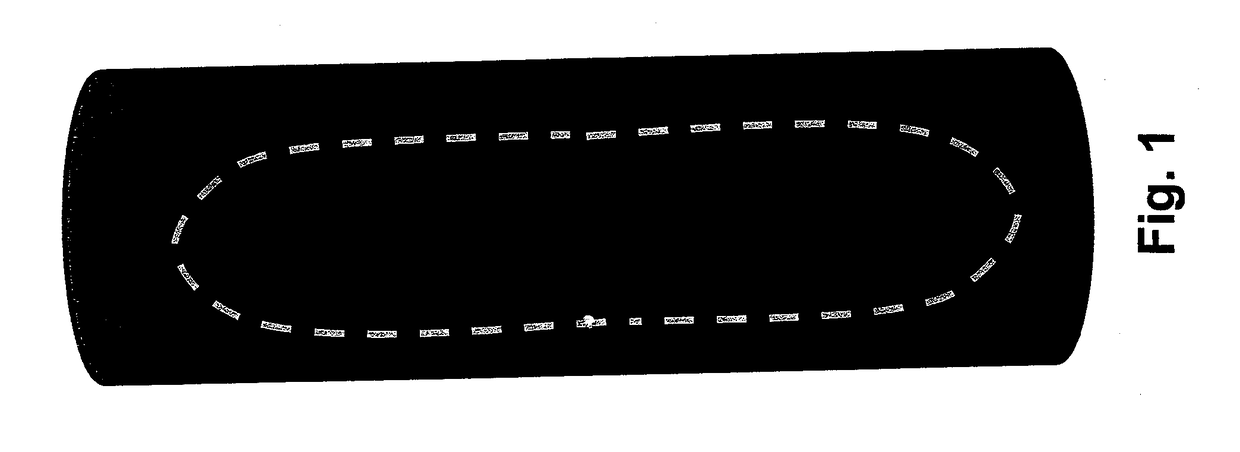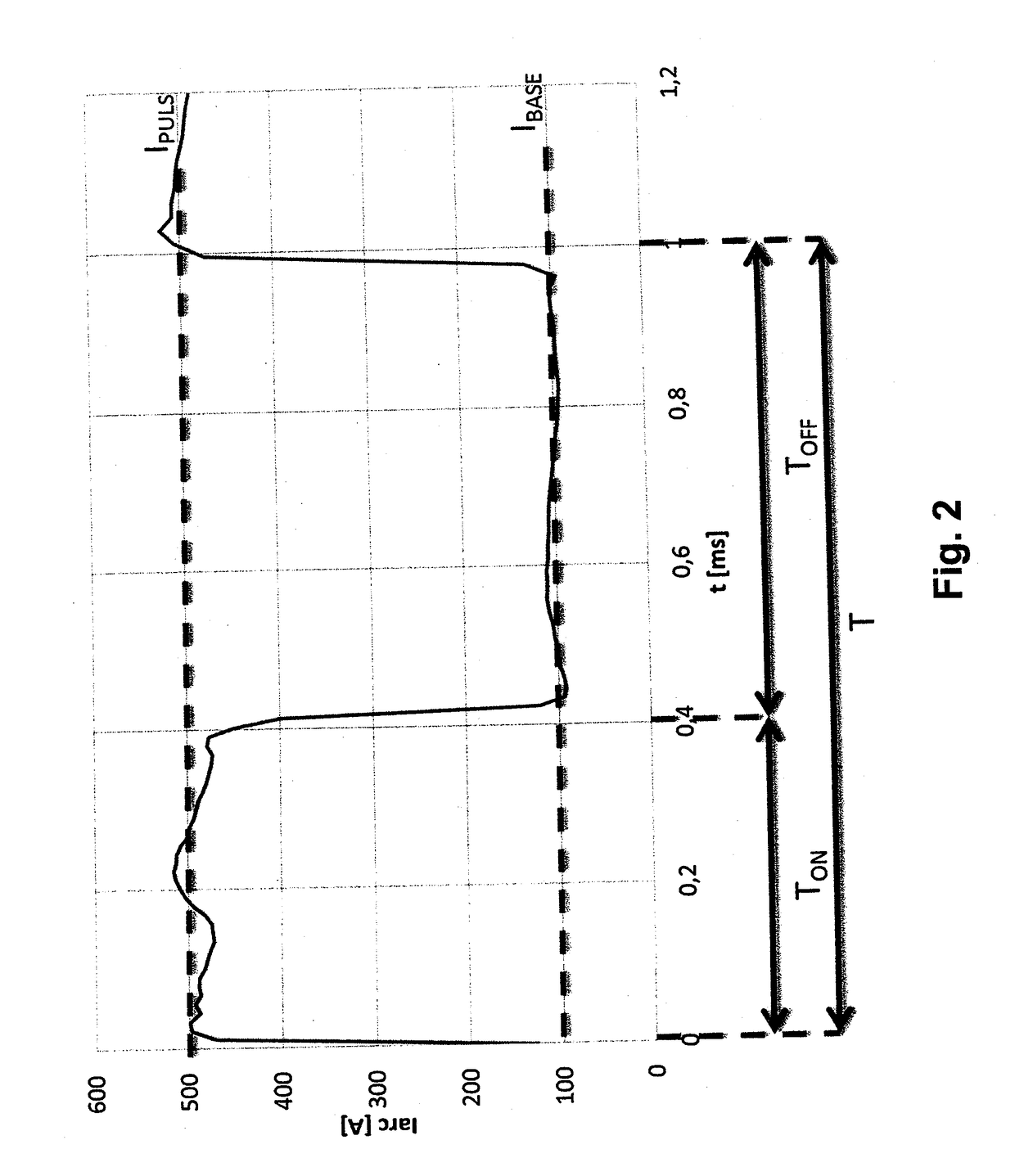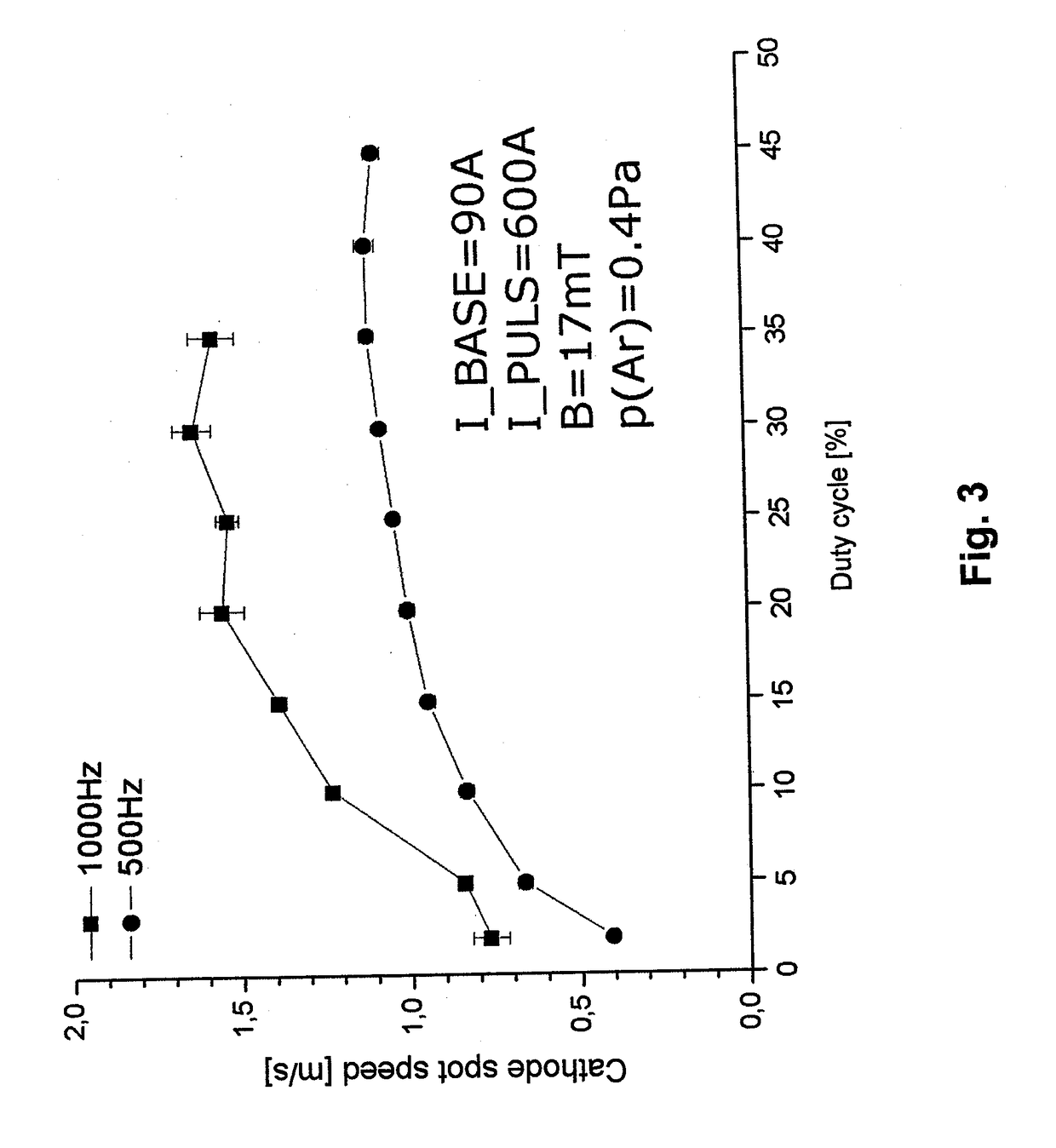Method of Deposition of a Wear Resistant DLC Layer
a technology of dlc layer and wear resistance, which is applied in the direction of chemical vapor deposition coating, vacuum evaporation coating, coating, etc., can solve the problems of large reduction of the growth rate of the layer, large reduction of the quantity and size of the macroparticle, and increase the roughness of the coating, etc., to achieve a reduced surface roughness, a reduced generation of macroparticles, and a higher hardness of the prepared layer
- Summary
- Abstract
- Description
- Claims
- Application Information
AI Technical Summary
Benefits of technology
Problems solved by technology
Method used
Image
Examples
example 1
[0032]A polished sample made of tool steel having the dimensions of 15×15×5 mm was placed in a holder rotating around 3 axes on a substrate holder in a vacuum coating chamber. A central cylindrical rotary graphite cathode made of isostatically compressed graphite (glass graphite can also be preferably used) was positioned in the center of the vacuum chamber in the middle of the rotating substrates to be coated and was connected to a pulse source of low-voltage arc. The magnetic field intensity in the place of motion of the cathode spot was 17 mT. In the door of the vacuum chamber, a titanium cylindrical rotary cathode was placed that was connected to a low-voltage arc source. The chamber was evacuated to the pressure of 5×10−3 Pa.
[0033]Before the entire deposition of the DLC layer, the substrate was subjected to metal ion etching with Ti ions from the cathode for 10 min and after the end of the metal ion etching a Ti layer was applied for 5 min.
[0034]During the deposition of the DLC...
example 2
[0052]A polished sample made of tool steel having the dimensions of 15×15×5 mm was placed in a holder rotating around 3 axes on a substrate holder in a vacuum coating chamber. A central cylindrical rotary graphite cathode made of isostatically compressed graphite (glass graphite can also be preferably used) was positioned in the center of the vacuum chamber in the middle of the rotating substrates to be coated and was connected to a pulse source of low-voltage arc. The magnetic field intensity in the place of motion of the cathode spot was 17 mT. In the door of the vacuum chamber, a titanium cylindrical rotary cathode was placed that was connected to a low-voltage arc source. The chamber was evacuated to the pressure of 5×10−3 Pa.
[0053]Before the entire deposition of the DLC layer, the substrate was subjected to metal ion etching with Ti ions from the cathode for 10 min and after the end of the metal ion etching a Ti layer was applied for 5 min.
[0054]During the deposition of the DLC...
example 3
[0057]A polished sample made of sintered carbide having the dimensions of 15×15×5 mm was placed in a holder rotating around 3 axes on a substrate holder in a vacuum coating chamber. A central cylindrical rotary graphite cathode made of isostatically compressed graphite (glass graphite can also be preferably used) was positioned in the center of the vacuum chamber in the middle of the rotating substrates to be coated and was connected to a pulse source of low-voltage arc. The magnetic field intensity in the place of motion of the cathode spot was 17 mT. The chamber was evacuated to the pressure of 5×10−3 Pa.
[0058]Before the entire deposition of the DLC layer the samples were subjected to cleaning with glow discharge for 15 minutes.
[0059]During the deposition of the DLC layer, the surface of the substrate was bombarded by carbon ions generated by the pulsed arc of the graphite cathode at the following parameters:
Holding current80ABias at the samples600VPulse current500APulsed arc freq...
PUM
| Property | Measurement | Unit |
|---|---|---|
| magnetic field | aaaaa | aaaaa |
| current | aaaaa | aaaaa |
| current | aaaaa | aaaaa |
Abstract
Description
Claims
Application Information
 Login to View More
Login to View More - R&D
- Intellectual Property
- Life Sciences
- Materials
- Tech Scout
- Unparalleled Data Quality
- Higher Quality Content
- 60% Fewer Hallucinations
Browse by: Latest US Patents, China's latest patents, Technical Efficacy Thesaurus, Application Domain, Technology Topic, Popular Technical Reports.
© 2025 PatSnap. All rights reserved.Legal|Privacy policy|Modern Slavery Act Transparency Statement|Sitemap|About US| Contact US: help@patsnap.com



